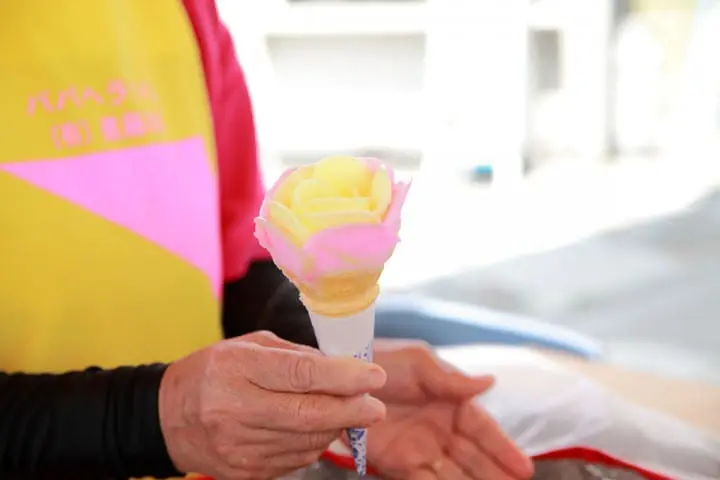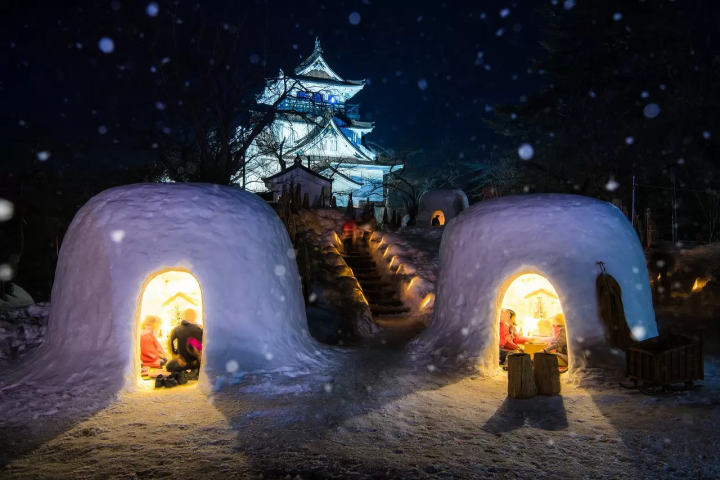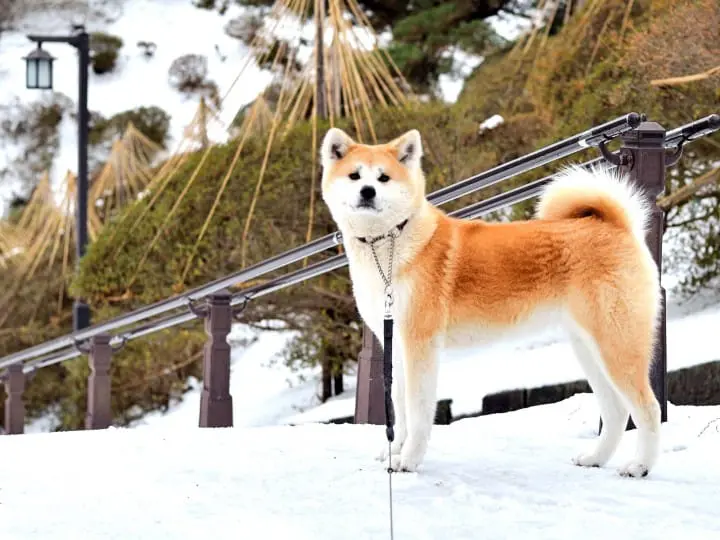Akita Kanto Festival 2025: Witness a Parade of 10,000 Lanterns

The Akita Kanto Festival is held each year August 3 - 6 in Akita City as a ritual to pray for good health and a good harvest. Check the dates and highlights of this magical festival, where you can witness 10,000 lanterns rising up in the night sky.
The Akita Kanto Festival, a Major Summer Celebration in Northern Japan

Photo courtesy of Akita Prefecture General Information Guide
The Akita Kanto Matsuri, or Akita Kanto Festival is an annual festival held in summer in Akita City, northern Japan.
The Akita Kanto Festival is held as a celebration to pray for good crops and the good health of the citizens. It is usually held every year from the 3rd to the 6th of August.
Together with the Nebuta Festival in Aomori, and the Tanabata Festival in Sendai, it is considered to be one of the Three Great Tohoku Festivals, and it certainly is one magnificent festival the Tohoku region is proud of.
Official website of the Akita Kanto Festival: https://www.kantou.gr.jp/english/
The Origins of the Akita Kanto Festival
It is believed that the origins of the Akita Kanto Festival could be tracked down to the old custom of neburi nagashi, often performed during the Tanabata, Obon, and other festivals of the old Japanese calendar (*1).
Neburi nagashi is the tradition when people try to vanquish drowsiness and sleeping sickness, and pray for their health, and is held at midyear, from the 7th until the 15th of July. The reason behind such ill feelings against sleepiness is the physical similarity between sleeping and sickness, and even death. It is said that during the original festival, people would set adrift boats and toro lanterns down the river.
Today, this custom has undergone some transformations – it becomes a parade in which men carry around 5 to 12-meter-long poles with many lanterns attached to them – these are the so-called kanto poles. They come in various sizes and could weigh from 5 kg (the smallest kanto pole) to 50 kilos (the largest pole)! But that is not the only thing to be awed by – a pole can have from 24 to 46 lanterns on it, so the total number of them might even go as far as 10,000 lanterns, shining their way through the festival!
Since the lantern pole almost looks like an ear of rice, this festival is not only entrusted with your prayers for good health, but with the ones for good harvest as well.
In this article, read everything there is to know about the venues and access to the festival, how to enjoy it completely and what to bring with you, and other useful information about the magnificent Akita Kanto Festival.
* 1 Japan's traditional calendar: the calendar used until Meiji Period, originating from the Chinese calendar. The Tanabata Festival (the 7th of July in the traditional calendar) should be celebrated at the beginning of August according to the Gregorian calendar.
Akita Kanto Festival 2025 Schedule
Akita Kanto Festival 2025 Dates: August 3 – 6
Official website: https://www.kantou.gr.jp/english/
Make sure you don’t miss out on the grandiose beginning of the festival – the kanto poles enter the scene starting from 18:50, and get carried down the Kanto Avenue (one of Akita’s biggest streets; also the main venue of the festival, from Sannojujiro to the Nichomebashi).
A special performance takes place starting from 19:25 – the showcase when performers balance the kanto poles on the top of their palms, foreheads, and such. Sadly, the exciting performance only lasts until 20:35, after which the photo-shooting session starts – the so-called “close-up experience” when you can take pictures of the kanto poles. The ceremony ends by 20:50, with the poles leaving the venue.
Finding the Kanto Festival Venue From the Station
You’ll catch sight of Kanto Matsuri easily – it is held in the vicinity of Akita Station. The most comfortable way to get to Akita Station from Tokyo is surely by shinkansen – ride the JR shinkansen Komachi bound for Akita from Tokyo Station, and get off at the last stop, Akita Station. It will take you about 3 hours and 50 minutes, and the fare is 18,140 yen. (*Consider using the JR-EAST Pass to save on expenses.)
Upon arrival at Akita Station, head to the Kanto Avenue (Kanto Oodori, from Sannojujiro to Nichomebashi), walk for approximately ten minutes, and enjoy – you’re in time to witness some spectacular performances!
Akita Station
Address: Akita, Akita, Naka-dori 7-1-2
Highlights: Exciting Performances and Local Food
Although you might get mesmerized by the wonderful and unusual skills of the performers, it would be a pity not to try all that gourmet food since you’re already there!
Let your eyes and stomach decide which local gourmet “on-the-go” dish looks the most appealing, and make the festival joy double! We will introduce some of the greatest food for the eyes and the taste buds here.
The Special Skills of Kanto Performers

Photo courtesy of Akita Prefecture General Information Guide
You’ll recognize the exquisite performance of Kanto Festival in an instant – why, the performers are balancing the kanto poles on their palms, foreheads, shoulders, and such!
The performance is adjusted to the rhythm of taiko and ohayashi (*2), and the combination of the music and the spectacular skills are worthy of your awe, for sure! It is said that balancing on the hip is the most difficult and challenging of all, but be sure to check out all the performances. We guarantee you won’t be able to look away!
*2 Ohayashi: the music performed during the festivals.
Akita Kanto Festival Food



Photo courtesy of Akita Prefecture General Information Guide
If you’re interested in all the food you can see while strolling around during the festival, brace yourself, because we have some exciting news to tell you – that is the local gourmet food festival, held at the same time as the Kanto Festival! All the specialties of Akita are assembled there, and it is located just five minutes away from the main venue of the Kanto Festival.
You can taste the famous inaniwa udon, one of the three ruling udon noodles of Japan (goto udon, sanuki udon, and inaniwa udon), yokote yakisoba, with a sunny-side-up fried egg topping, or the baba hera ice cream, a photogenic ice cream dessert made by elderly ladies of Akita (in Akita dialect, they are called baba), using a cooking spatula (hera in Japanese).
There is plenty to choose from at the numerous stalls planted around the venue, so choose wisely and enjoy both of the festivals to your heart’s content!
What to Wear and What to Bring to the Festival
If you are at a loss about your festival outfit or the stuff you might need to bring, take a look down below to make sure you’ve got everything covered.
Clothes
The average temperature in August in Akita is 29.2 degrees Celsius (source: Japan Meteorological Agency (Japanese)). However, the temperatures easily rise over 30 degrees during the day, so be sure to take extra precautions against heat strokes.
Also, it gets slightly colder in the mornings and the evenings, so it would be prudent to bring a light shawl, a thin hoodie, or similar.
Things Not to Forget: Sunglasses, Sunscreen, Towels, Water
Take care of your health by using sunglasses, sunscreen, and such! You might even sweat while sightseeing or watching the event, so a towel or a handkerchief will come in handy. But, first things first – be sure to remember to hydrate, in order to protect yourself from heat stroke!
FAQ
What is the biggest festival in Japan?
The biggest and arguably most famous festival in Japan is the Gion Matsuri in Kyoto. This month-long festival held in July is renowned for its colorful processions, traditional music, elegant dances, and elaborate floats. The Gion Matsuri is a significant cultural event deeply rooted in history, drawing millions of visitors annually who come to witness and participate in its vibrant celebrations.
What is the meaning of the Kanto festival?
The Kanto Festival, known as the Kanto Matsuri in Japanese, is a traditional summer festival held in Akita City, the capital of Akita Prefecture in northern Japan. This festival, celebrated annually from August 3rd to 6th, is one of the most famous and iconic festivals in the Tohoku region.
The central feature of the Kanto Festival is the mesmerizing display of kanto, which are tall bamboo poles adorned with paper lanterns. These poles can reach staggering heights, with the largest ones measuring up to 12 meters in length and holding as many as 46 lanterns. During the festival, performers skillfully balance these kanto poles on their foreheads, shoulders, hips, or hands, creating a dazzling spectacle as they parade through the streets.
The Kanto Festival is rooted in the region's agricultural history and is believed to have originated as a ritual to pray for a good harvest. The lanterns symbolize sheaves of rice, and balancing the kanto poles signifies the skill and strength necessary for successful farming.
The festival is not only a display of impressive feats of balance and coordination but also a lively celebration featuring traditional music, dance, food stalls, and a vibrant carnival atmosphere. The Kanto Festival attracts visitors from all over Japan and around the world, offering an unforgettable cultural experience that captures the spirit and traditions of Akita Prefecture.
What is the Matsuri festival?
A Matsuri is a traditional Japanese festival that is deeply ingrained in the country's cultural heritage. Matsuri festivals are celebrated throughout Japan and are typically linked to specific Shinto shrines or Buddhist temples, marking important events or seasonal changes. These festivals are characterized by vibrant displays of traditional costumes, music, dance, rituals, and often feature processions through the streets.
Matsuri festivals reflect various aspects of Japanese culture, traditions, and beliefs. They serve as opportunities for communities to come together, express gratitude, celebrate historical events, pray for blessings, and enjoy lively festivities. Some well-known Matsuri festivals include the Gion Matsuri in Kyoto, Nebuta Matsuri in Aomori, Tenjin Matsuri in Osaka, and Sanja Matsuri in Tokyo.
Throughout the year, different regions in Japan hold Matsuri festivals that showcase local customs, arts, and folklore. These events play a significant role in preserving Japan's cultural heritage, fostering community spirit, and attracting visitors who are keen on experiencing the lively and diverse traditions of Japanese festivals.
Which part of Japan is Akita?
Akita Prefecture is located in the Tohoku region of Japan, situated in the northern part of the Honshu island. Akita Prefecture is known for its natural beauty, including areas like Lake Tazawa, the Shirakami-Sanchi mountain range (a UNESCO World Heritage site), and the Oga Peninsula. The capital city of Akita Prefecture is also named Akita, and the region is renowned for its traditional festivals, such as the Kanto Festival and the Namahage Festival, which attract visitors from both within Japan and internationally.
What month is best for festivals in Japan?
In Japan, festivals are a year-round celebration of culture and tradition, each season offering its own distinct array of vibrant events. Spring, particularly late March to early April, heralds the iconic cherry blossom festivals, while Golden Week in late April to early May sees a convergence of national holidays with numerous festivities taking place. Summer, from June to August, features Obon festivals in mid-August and renowned events like Gion Matsuri in Kyoto and Tenjin Matsuri in Osaka in July, known for their colorful processions. Autumn, spanning September to November, showcases harvest festivals and events like the Takayama Festival in October, famous for its elaborate floats. As winter arrives in December to February, cities illuminate with dazzling light displays while New Year festivals grace shrines and temples, offering a cultural tapestry of celebrations throughout the seasons, making Japan a festival enthusiast's dream destination year-round.



![[Akita/Tohoku Three Major Festivals] Explaining the basic information and how to enjoy the "Akita Kanto Festival"!](https://resources.matcha-jp.com/resize/200x2000/2023/08/04-142642.webp)





































![[Coupon Available] Attention Overseas Winter Sports Fans! Nagano's Sports Depot Has Evolved](https://resources.matcha-jp.com/resize/720x2000/2026/01/05-254819.webp)
![[2 hours from Tokyo ] 10 Quiet and Breathtaking Views of Mount Fuji in Yamanashi Hokuto City , Yamanashi - Part 2](https://resources.matcha-jp.com/resize/720x2000/2025/12/16-253037.webp)

![[Reopening in March 2026] Ikoma Sanjo Amusement Park Park, 45 minutes from Osaka , with free admission](https://resources.matcha-jp.com/resize/720x2000/2024/08/28-194409.webp)